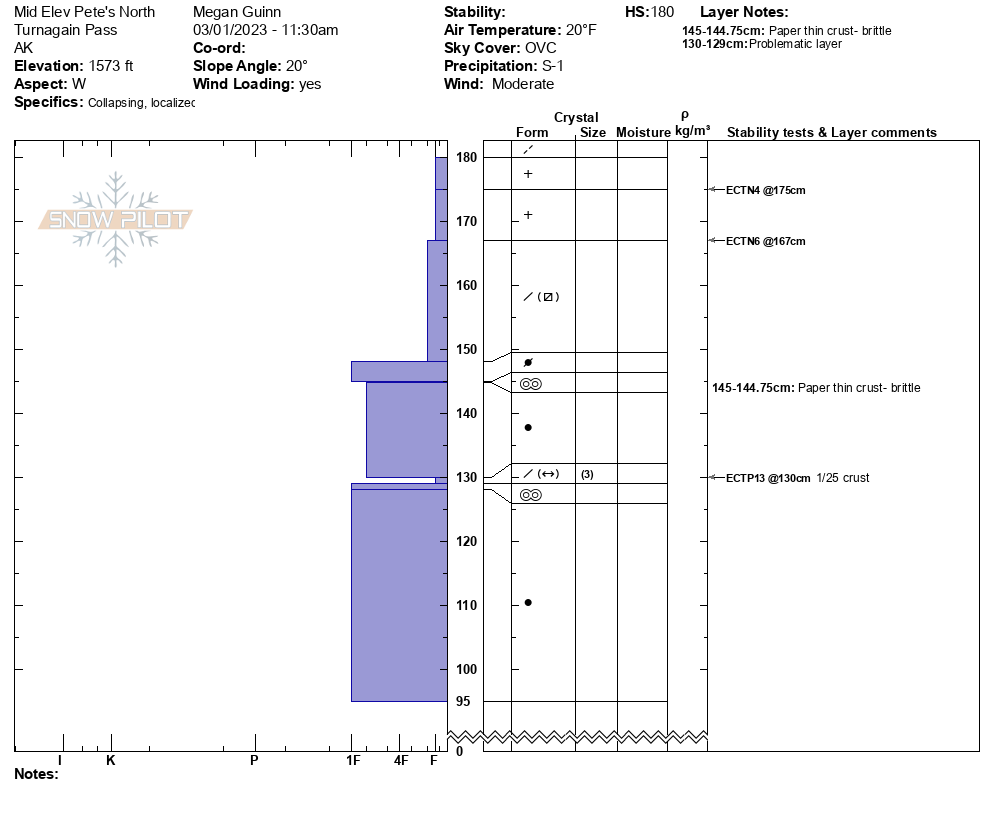| Recent Avalanches? | No |
| Collapsing (Whumphing)? | Yes |
| Cracking (Shooting cracks)? | No |
Observation: Turnagain
Location: Pete's North
We Toured up Pete’s North to the ridgeline at 2600’ and skied the new snow. We wanted to get a look at the conditions after the storm and get a better idea of snow totals and changes in snow stability. We kept our attention on wind loading on leeward slopes. We didn’t find any signs of instability within the new and windblown snow, but we were intentionally avoiding wind-loaded slopes so we didn’t necessarily get a chance to test them. We heard a whumph at the top of the alder field (1600’) and dug down to find the culprit was a layer of facets above a crust buried about 1.5-2’ deep.
We heard a collapse as we were walking out of the top of the alders on a west aspect at 1600’. We dug down to find that the layer that collapsed was a layer of facets above a crust buried 1.5-2’ deep.
Wind was consistent throughout the day and gradually grew stronger as we gained elevation but it didn't seem to be knocking the snow out of the trees until around 1700’. It snowed off and on but it was generally hard to tell if the snow that was falling was new precipitation or wind transported snow. Wind direction was variable, but primarily out of the west to southwest.
Pete's North only had 3"- 4"of new snow from the past two days. The snow that had fallen was very light and was easily transported by the wind. The most noticeable wind affected surface snow was on the upper elevation ridgelines, where winds were forming stiff slabs and scouring windward surfaces.
We dug 4 pits throughout our tour. The first pit raised some flags when we got a propagating result (ECTP13) on top of the 1/25 melt-freeze crust. We dug two more pits in an adjacent open area at the same elevation to check for variability within this layer and had no noteworthy failures. We dug another pit at treeline (approx. 2300’) and did not have any propagating results. We believe that the failure in our first pit is an isolated issue and is most problematic in areas with a thinner snowpack. The snowpack in this area was only around 180 cm (6’) deep on average, which is a little more than half the average depth we’ve been seeing at similar elevations towards the north end of Turnagain Pass.


